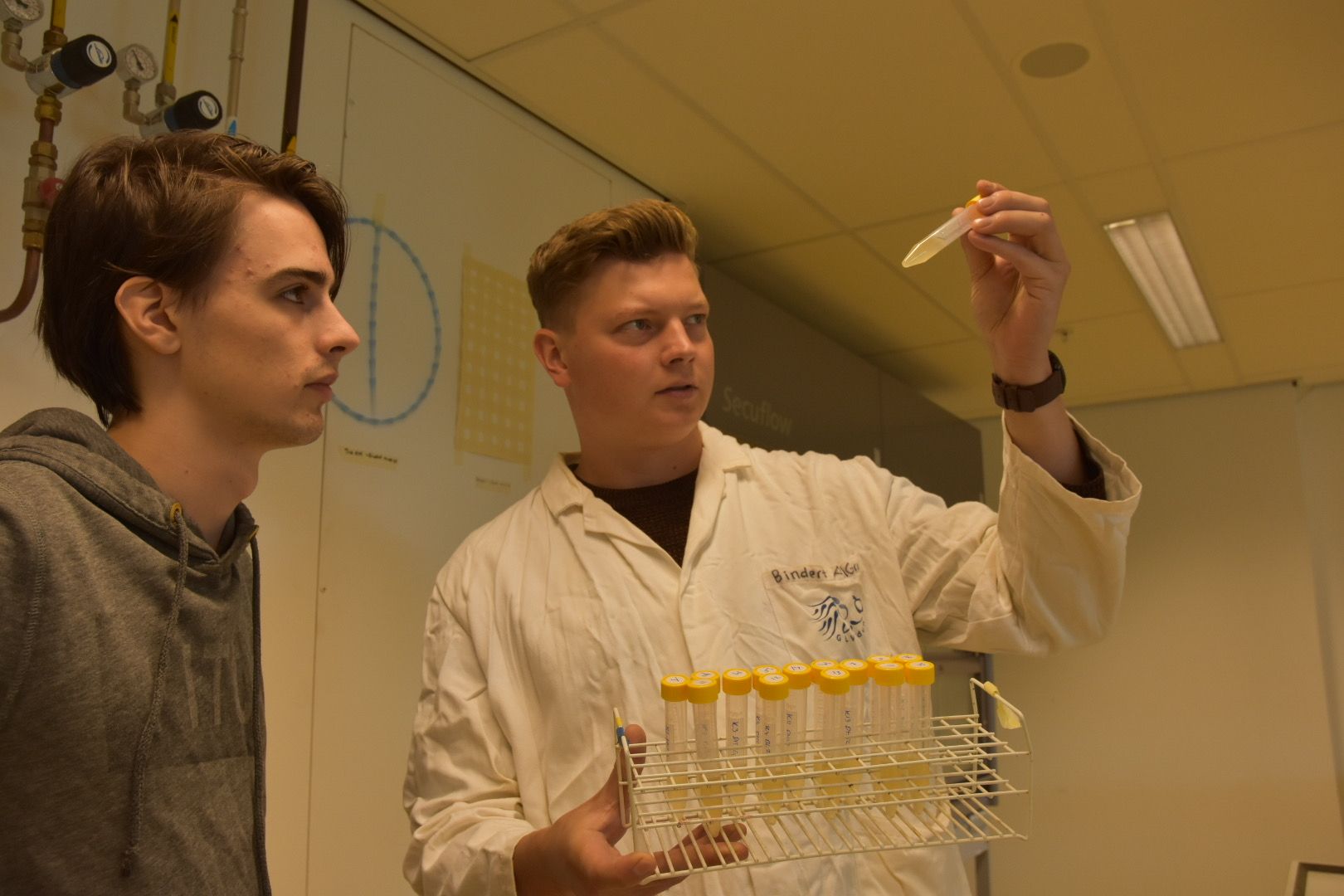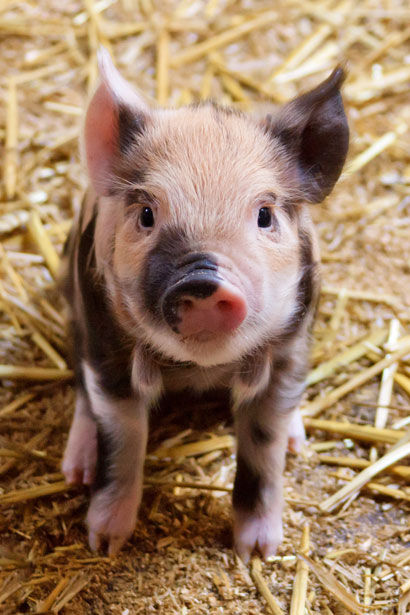Nanobuddies - GMO against Avian Influenza
- Anette Hallik
- Articles
- 5 minutes (989 words)
As we all know, Linnaeusborg is a huge building with mazes after mazes of labs. Today, we are gonna have a sneak peek into one of those - the lab of iGEM Groningen. The team welcomed me to their work spaces and let me - and all of our readers - have a little insight of what they do and how they do it, to show us what we - as students - can already do and inspire all of us to pursue with cool scientific projects.
Working on iGEM project
iGEM is a wonderful opportunity for anyone to participate in a project on genetics. Although every team needs some biologists/scientists, even if you come from any other area of study (business or arts etc) and have something to offer to the team: negotiating with potential sponsors, coding, design of the website or anything else that helps with the project, you are welcome to join the team. The duration of the project is roughly 8 months during which one can spend countless hours in the lab working on the project of their dreams. To end this spectacular project on a bang, the team will fly to meet all other iGEM teams around the world to see what they have done and to determine the most creative and well-executed projects. If this article makes you excited about science and lab-work, why not apply next year!
iGEM Groningen team 2022
This year in the University of Groningen the iGEM team has a very novel and fascinating project - Nanobuddies! For a brief (but very clear) introduction, you can scan the QR code which leads you to a small video made by the team themselves. They have decided to tackle a currently relevant problem: the wide outbreaks of Avian Influenza. Nanobuddies are approaching the virus from the side of genetic engineering, their design is clever but relatively simple. Their goal is to genetically modify a bacteria that naturally already lives in the lungs of poultry - Lactobacillus reuteri - to produce nano-bodies. ‘What exactly are nano-bodies?’ you may wonder. They are very similar in function to antibodies, which can identify an intruder - in this case Avian Influenza - in the body and mark them accordingly to avoid infection. This strategy is a bit different from classic vaccination, instead of making the chicken immune to the virus, the nano-bodies capture and neutralize the virus. And as the bacteria in use already lives in the bird’s lungs, just by spraying the genetically modified bacteria on the poultry, the bacteria will be inhaled by the chicken, leading to production of the nano-bodies inside the chicken, neutralizing virus before infection. It is not yet determined how often the bird farms should be sprayed to ensure the poultry stays healthy, as animal testing is outside of the scope of this project.
The term ‘GMO’ might be very scary for some as the discourse around this term has caused controversies left and right. As scientists, we all know that GMO is not anything to be scared of, anyhow, we still need to be careful of keeping laboratory GMO-s under control so the modified bacteria could not undergo mutations in nature, leading to unpredictable consequences. Our iGEM team has also thought about that, creating a kill-switch system to neutralize the modified bacteria if they are out of a chicken’s body. How is that even possible? They are looking into two off-switching systems, light and heat based. For now, the photosensitive system is a tad bit complicated for the scope of this project, as the genetic modifications necessary for a system as such are very complex. That system would activate with light, as there is no light present in the insides of a bird. However, the heat-based kill-off system is much more promising and also seems quite trust-worthy in this stage of the project. The internal temperature of chickens is 41°C, creating a contrast between the outside temperature and the internal temperature of animals different from chicken (human internal temperature: 36,8°C), leading to quite a precise mechanism, which triggers cell death of the bacteria when the temperature is lower than 41°C. This would solve the problem of the bacteria further multiplying in nature and keeping the mutated bacteria only in the poultry in the farms. Sounds kind of ideal, doesn’t it?
In the last 7 months, the team has done a lot of problem-solving, brain-storming and development. So far, the experts on the topic of research, who have heard about this project are baffled by its novelty - they have never thought of usage of this platform before. Spraying nano-body producing bacteria to the poultry farms would largely simplify the prevention of Avian Influenza outbreaks. Furthermore, this kind of platform - modifying Lactobacillus reuteri to produce nano-bodies - can potentially be used to prevent other viral infections in organisms other than chicken, as this bacteria is also native for the lungs and gastrointestinal tracts of humans, sheep, pigs and rodents.
We can really say that the future of medicine and disease prevention is deeply rooted in microbiology and genetic modification - there are so many possibilities! And there are so many possibilities for you, as a student, to do awesome, world-changing research!
What is Avian Influenza?
Commonly known as bird flu, Avian Influenza is an infectious viral disease that spreads amongst all birds, therefore also infecting poultry farms, leading to pointless killing of many birds to avoid further infection.
What is iGEM?
iGEM is a yearly competition organized by International Genetically Engineered Machine Foundation, where all high-schools and universities all over the world can participate in, by forming a team who will come up with a creative genetical engineering project on one of the following categories: diagnostics, therapeutics, climate crisis, environment, conservation, food & nutrition, bio-manufacturing, industrial scale-up, energy, foundational advance, software & AI, and high school.



Comments
Log in to read and post comments